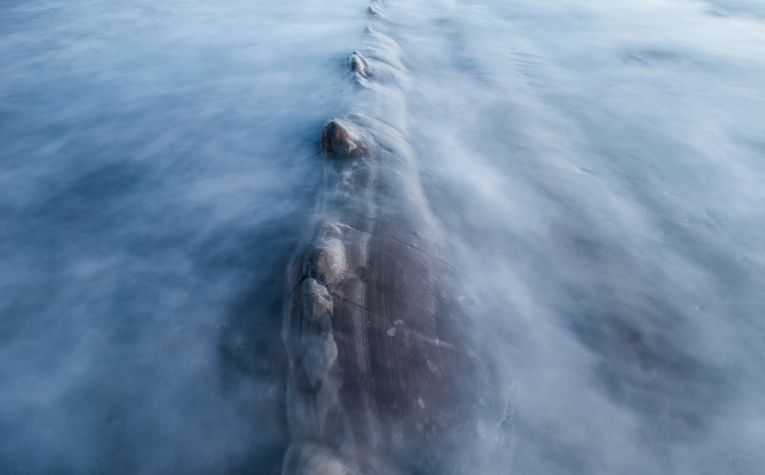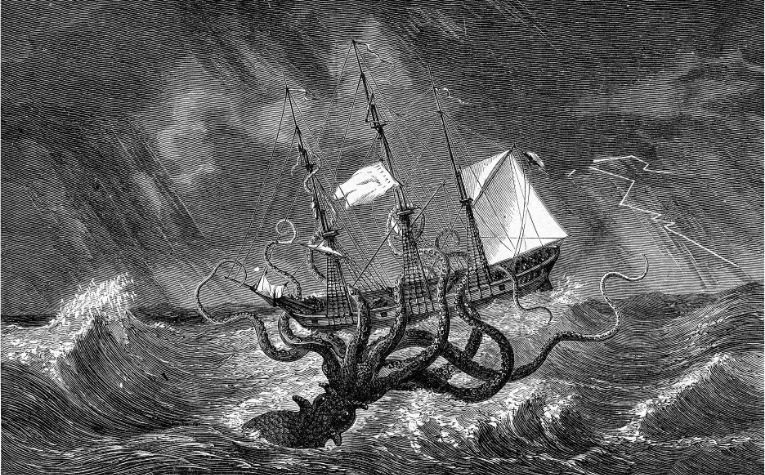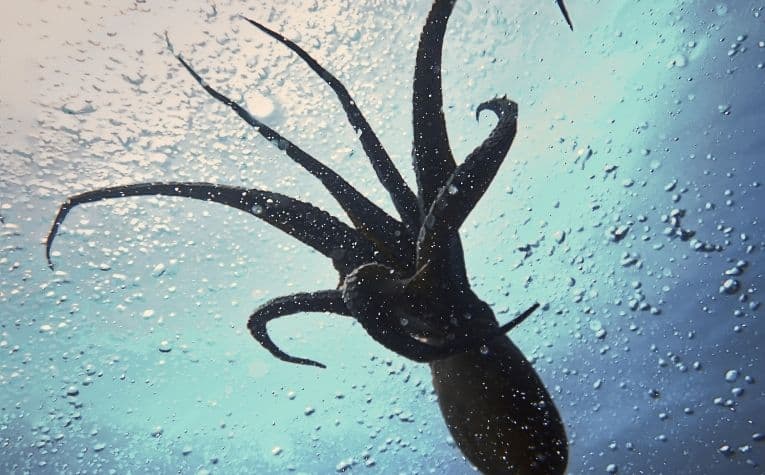For centuries tales of a mysterious sea creature circulated among mariners throughout Scandinavia and beyond. The Kraken, as it came to be known, became legendary.
Not only could the Kraken grab hold of an entire ship with its long tentacles, but the massive whirlpools it was capable of creating could also swallow up vessels whole.
Many of the Kraken’s exploits were popularized through Nordic myths.
Still, through the centuries, there were also firsthand accounts provided by fishermen and sailors who purportedly had personal encounters with the Kraken and lived to tell their tales.
Some were credible, but others defied belief.
Not only have there been eyewitnesses to the Kraken’s awesome attributes throughout history, but the search for this elusive ocean-dwelling beast has continued to the modern era.
Armed with modern technology, ingenuity, and determination, scientists are unwavering in their pursuit of the Kraken, even if it means following it to the deepest depths of the world’s oceans.
Also, see Is the Kraken a Squid or an Octopus to learn more.

Eye-Witness Accounts of the Kraken
The origins of the Kraken myths can be traced to Nordic folklore, which told of a fearsome creature that lived at the bottom of the ocean but would surface to feed and cause havoc for ships unfortunate enough to come across the beast. (Also see Norse Mythology vs Egyptian Mythology: What’s the Difference?)
By the Middle Ages, the Kraken had reached near-celebrity status as it appeared in writings such as,
- Norse sagas
- royal archives
- scientific journals
Because the Kraken’s domain was the ocean, virtually all early eyewitness accounts came from those who spent much of their time on the seas, namely fishermen and sailors.
In the mid-18th century, the Danish historian (and bishop) Erik Pontoppidan’s Natural History of Norway included descriptions of the Kraken based on the personal accounts of people who claimed to have encountered the beast.
Through Pontopiddan’s writings, these eyewitnesses claimed that:
- The Kraken was round, flat, and had many arms (also referred to as “branches”)
- Its size was enormous, rivaled by no known animal
- It fed on entire schools of fish at a time and lured them in by releasing a foul substance in the water (there were reportedly fishermen who would risk life and limb to take advantage of the multitudes of fish in the vicinity of a feeding Kraken) [1]
Also, see 14 Great Books on Norse Mythology that explain the gods, heroes, and villains of these ancient stories of Scandinavia.

A 19th Century French Warship Battles the Kraken
One particularly riveting account of a face-to-face encounter with the Kraken dates back to 1861 when the lookout on a small French naval vessel (the Alecton) spotted a large mass floating in the waters near the Canary Islands.
On closer inspection, the enormous object turned out to be a massive, long-tentacled creature that the vessel’s captain immediately identified as none other than the mythical Kraken.
However, rather than fleeing, the courageous crew sought to capture the beast and bring it back to base as indisputable evidence of their encounter.
Sadly for the French sailors, despite their best efforts and nearly three hours of engaging the Kraken, the slithery creature slipped through the snare they had fashioned from a length of rope.
Because they returned empty-handed without any physical evidence of the Kraken, their accounts were ultimately dismissed as mass hallucinations, but they did contain some interesting details:
- The Kraken was brick red, with a body that was approximately 18 feet in length with its arms and tentacles adding another 18 feet
- The Kraken’s weight was pegged at about two tons by those on board the Alecton
- Cannonballs and harpoons that were fired at the Kraken seemed not to affect the creature, thanks largely to its rubbery exterior, and did nothing to scare it off
- The creature was largely unfazed by the armament that was directed toward it, submerging momentarily with each passing volley only to resurface a few moments later to re-engage the ship’s crew
- Only after several hours of continuous struggle (and apparently, a cannonball that found its mark) were the sailors able to tie a rope around the Kraken’s body. Due to the creature’s immense weight, the noose constricted and cut through its flesh, allowing all but the tip of the tail to slip away into the ocean’s depths [2]
Also, see What Dragons Meant to Vikings to learn more.
The Kraken’s True Identity Revealed
As stories continued to circulate about the mysterious Kraken patrolling the waters throughout Northern Europe, an increasing number of large, tentacled carcasses were landing on beaches where they drew naturalists and scholars’ attention.
It was thanks in large part to these occurrences that scientists began to connect the dots in the 18th and 19th centuries.
In the 1850s, a Norwegian naturalist named Japetus Steenstrup studied the carcasses of cephalopods that washed ashore, and in particular, the beaks through which they fed themselves.
After several years of research, Steenstrup announced the formal discovery of the creature he named Architeuthis dux, known after that to the world as the giant squid (the name means “ruling squid”).
After centuries of hiding behind myths and being cloaked in mystery, the Kraken’s true identity was revealed. [3] [4]

Uncovering the Secrets of the Giant Squid
Even in the modern era of science and technology, the giant squid has remained elusive, and sightings of live specimens are extremely rare, owing largely to the incredible depths at which these animals live.
Thanks to the scientific community’s persistence and ingenuity, incredible video footage of the giant squid, aka the Kraken, has been captured from incredible depths.
In July 2012, a multi-national team of scientists successfully filmed a giant squid in its natural habitat at an astounding depth of 2,950 feet (900 meters) in waters off the coast of Japan.
It marked the first time that the mysterious creature had been videotaped in such surroundings (a previous video had been filmed of a giant squid that was brought up to the surface). [5]
Then, during the summer of 2019, another deep-sea mission successfully filmed a giant squid 100 miles off the coast of New Orleans, marking the first time that the animal known for centuries as the Kraken had been captured on film in American waters. [6]
On both occasions, technological innovations (including the use of infrared lighting and high-tech lures) and good old-fashioned persistence proved to be the keys to finally observing a giant squid in its own realm, far below the ocean’s surface.
Also, Is the Kraken a Myth? to learn more.
Was a 200-Ft. Giant Squid Spotted on Google Earth?
During the spring of 2016, stories began circulating among various news outlets that someone had spotted a Kraken-like behemoth in the icy waters near Antarctica.
Best of all, there was definitive proof in the form of color images because the beast’s presence on the surface of the ocean had been captured using Google Earth.
From the pictures that quickly spread throughout the internet like wildfire, the creature’s body alone was estimated to be 100 feet (30 meters) long, excluding the arms and tentacles, which would put the overall length of the modern-day Kraken at an astounding 200 feet (60 meters). [7]
Ultimately, however, thanks to scientific review and rather quick internet sleuthing, this discovery’s validity was debunked.
The Google Earth Kraken was revealed to be none other than a unique, vertical rock formation near Deception Island known as Sail Rock.
The aerial view provided by Google Earth of this known geological feature did resemble a large surfacing creature. Still, wishful eyes (and hearts) transformed the image into something it clearly was not.
The willingness of the public to embrace even a momentary glimpse of the magnificent beast from the deep does show that even today, the Kraken maintains its rock star status. [8]
Conclusion
After many centuries, the mystery surrounding the Kraken is being solved. In the process, its true identity has been revealed for all to see.
References:
[1] Source
[2] Source
[3] Source
[4] Source
[5] Source
[6] Source
[7] Source
[8] Source
